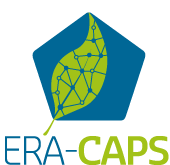Using translational genomics to underpin germplasm improvement for complex traits in crop legumes
- Acronym TRANSLEG
- Duration 1 April 2007 - 1 April 2010
- Project leader Micheal Abberton, Institute of Grassland and Environmental Research to Institute of Biological, Environmental and Rural Sciences, Aberystwyth University, United Kingdom
-
Other project participants
Klaus Mayer, GSF-National Research Center for Environment and Health, Germany
René Geurts, Wageningen University, The Netherlands
Leif Skot, Institute of Grassland and Environmental Research to Institute of Biological, Environmental and Rural Sciences, Aberystwyth University, United Kingdom
Iain Donnison, Institute of Grassland and Environmental Research to Institute of Biological, Environmental and Rural Sciences, Aberystwyth University, United Kingdom
Gyles Oldroyd, John Innes Centre, United Kingdom
-
Funding
The German Research Foundation (DFG), Germany
Netherlands Genomics Initiative / Netherlands Organisation for Scientific Research (NGI/NWO), The Netherlands
Biotechnological and Biological Sciences Research Council (BBSRC), United Kingdom
- Total Granted budget € 975,970
Abstract
The objective is to create a robust physical map of red clover (Trifolium pratense) anchored to the genome sequence of the legume reference species Medicago truncatula, and aligned to the clover genetic map. The anchored physical map will facilitate dissection of biological traits, future genetic improvement and marker assisted breeding in this important legume crop. A Phase 1 physical map was constructed using three BAC libraries (HindIII, 5x coverage; EcoRI and BamHI libraries, each at 10x coverage) with FPC software using fingerprints from all three libraries. Of a total 29730 clones, 22987 were placed in 2440 contigs. The largest number (1445) contained 3-9 clones, while 234 contigs contained two clones, and 641 10-24 clones. The rest had over 24 clones. A total of 62599 BAC ends were sequenced (BES) successfully from 36864 clones attempted. A first alignment showed that 792 red clover contigs, using BES and BAC clones, were aligned to the M. truncatula reference sequence. Between 150-200 gene specific markers were identified and sequenced in the two red clover parents of the F1 mapping family. Of those, 132 markers have been put onto a genetic linkage map, and 41 of those have a BAC clone address. A cytogenetics map of red clover has been completed. A pachytene karyogram has been described in which all 7 chromosomes can be identified. An analytical pipeline has been established for using the recently available BES and FPC data, and the repository architecture for storage and retrieval of red clover sequence data has been designed. More genetic markers and their BAC addresses will allow further improvements in the physical map, and in combination with cytogenetics and the analytical pipeline, will provide the robust physical map of red clover needed for establishing a detailed syntenic relationship with M. truncatula and the dissection of biological traits.
